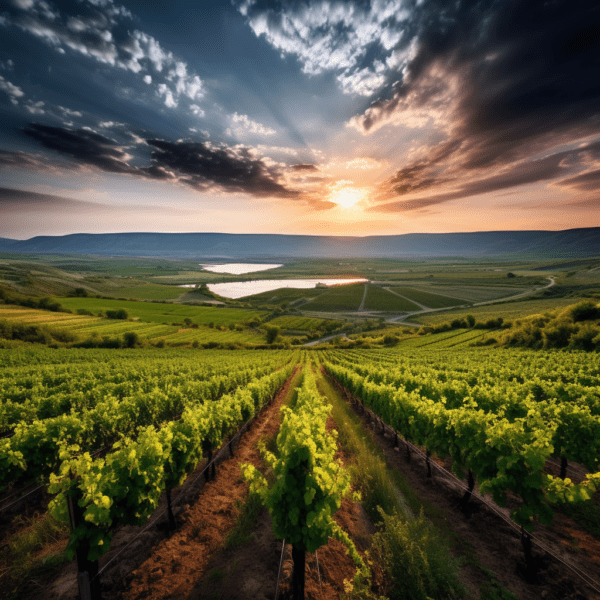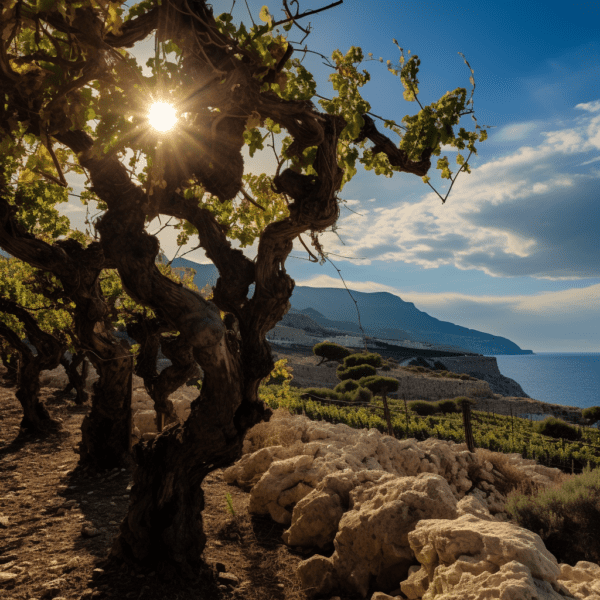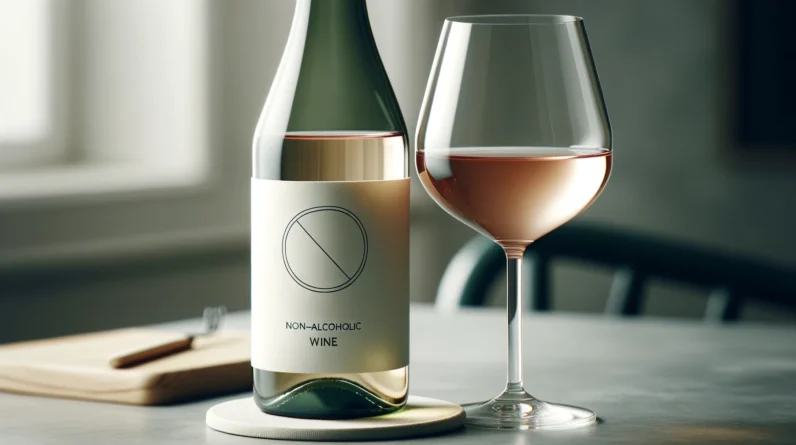
Embark on a vinous adventure beyond the familiar and into the realm of hidden treasures.
While the wine world boasts renowned classics like Cabernet Sauvignon, Chardonnay, and Merlot, there exists a constellation of lesser-known European wines waiting to be discovered.
These wines are the result of ancient grape varieties, unique terroirs, and time-honored winemaking traditions.
They promise a tasting experience that transcends the ordinary and offers a glimpse into the diverse tapestry of Europe’s winemaking heritage.
In this journey, we will explore the captivating stories, historical roots, and exceptional characteristics of these hidden gems, each offering a distinct and memorable encounter for the wine enthusiast.

Rare European Wines Worth Discovering
Europe is renowned for its diverse and historic wine regions, and amidst the well-known varieties, there are several hidden gems that often go unnoticed by the general public.
Here’s a rundown of some less-known European wines that are considered hidden treasures.
Schioppettino – Italy
Originating from the Friuli-Venezia Giulia region, Schioppettino is a red grape variety that almost faced extinction.
It’s known for its peppery flavor profile and is often likened to the more famous Syrah.

History
Schioppettino hails from the Friuli region, specifically Prepotto, where it has been cultivated since the 13th century.
It nearly vanished in the 1970s due to phylloxera and a shift towards more commercial varieties but was revived by dedicated local winemakers.
Production Methods
The grape is late-ripening and often harvested in late October.
It’s typically fermented in stainless steel or wooden vats and then aged in oak barrels to enhance its distinctive peppery and dark berry flavors.
Example: Ronchi di Cialla Schioppettino (bright red fruit flavors and peppery notes).
Txakolina – Spain
Coming from the Basque Country, Txakolina (or Chacolí) is a slightly effervescent, dry white wine that is typically served young and is perfect as an aperitif or with seafood.

History
This wine has been produced in the Basque Country for centuries, traditionally consumed locally and seldom exported.
Its recent surge in popularity is attributed to modern winemaking techniques that have refined its quality.
Production Methods
Txakolina is made from indigenous grapes like Hondarribi Zuri and Hondarribi Beltza.
It’s fermented at low temperatures to maintain its signature fizz and served young to enjoy its fresh, tangy character.
Example: Ameztoi Txakolina (crisp and slightly effervescent white wine with refreshing citrus and green apple flavors).
Xinomavro – Greece
This is a dominant red grape in the Macedonian region of northern Greece.
It’s known for its strong tannins and acidity, often compared to Nebbiolo, and ages well, developing complex flavors.

History
With a name meaning “acid black,” Xinomavro has been a staple in Macedonia for ages.
It’s often associated with the ancient wine of Naoussa, which was said to be favored by Aristotle.
Production Methods
Xinomavro is often compared to Nebbiolo for its aging potential.
The winemaking process involves extended maceration and aging in oak, which allows its complex flavors of tomato, olive, and spice to develop.
Example: Kir-Yianni Ramnista (a Xinomavro red wine from Naoussa, Macedonia, offering robust tannins and flavors of red berries and spices).
Saperavi – Georgia
Georgia’s winemaking history is over 8,000 years old, and Saperavi is its standout red variety.
It produces deep, dark wines with the potential for aging, featuring notes of blackberry and spices.

History
Saperavi, meaning “dye” due to its intense color, is one of Georgia’s oldest grape varieties.
Georgian winemaking is unique for its use of qvevri, large earthenware vessels buried in the ground, dating back thousands of years.
Production Methods
Traditional Saperavi is made using qvevri, where the grapes are fermented and aged with their skins, resulting in a distinctive style with high tannins and deep coloration.
Example: Pheasant’s Tears Saperavi (made in traditional qvevri, deep color and complex layers of dark fruit and earthy notes).
Rkatsiteli – Eastern Europe
One of the oldest grape varieties, Rkatsiteli produces white wines that vary in style from crisp and light to rich and full-bodied, depending on the region and winemaking techniques used.

History
One of the oldest known grape varieties, Rkatsiteli originated in Georgia, where it has been cultivated since 3000 BCE.
It was widely planted across the Soviet Union, contributing to its spread throughout Eastern Europe.
Production Methods
In modern times, Rkatsiteli is made both in qvevris and in more conventional stainless steel tanks.
The method chosen influences whether the wine is more traditional with strong tannins or fresher and fruitier.
Example: Pheasant’s Tears Rkatsiteli (Georgian white wine, showcasing the grape’s versatility with notes of apple, apricot, and honey).
Furmint – Hungary
Best known for its role in the sweet wines of Tokaj, Furmint also produces some remarkable dry whites, with good acidity and flavors of green apple, pear, and honey when allowed to ripen fully.

History
Furmint’s origins trace back to the 16th century in Hungary, particularly in the Tokaj region.
It is best known for its role in the noble rot-affected Tokaji Aszú wines.
Production Methods
For dry Furmint, grapes are harvested earlier to maintain acidity.
The wine is typically fermented in stainless steel or aged in oak to express its mineral and fruity profile.
Example: Disznókő Tokaji Furmint (offers dry expressions with flavors of green apple, citrus, and a mineral edge).
Mencia – Spain
Found in the northwestern regions of Spain, particularly Bierzo, Mencia is a red grape that creates wines with floral and red fruit flavors, often with a mineral undertone.

History
Mencia is primarily found in the northwest of Spain, with mentions dating back to Roman times.
It was mostly consumed locally until modern winemakers discovered its potential in the 1990s.
Production Methods
Modern Mencia wines are made with a focus on preserving the grape’s natural fruit flavors, often using whole cluster fermentation and aging in neutral oak to keep the wine’s freshness and
aromatic complexity.
Example: Descendientes de J. Palacios Petalos (a Mencia red wine from Bierzo, known for its floral aromas and red fruit character).
Trousseau – France
Primarily found in the Jura region, Trousseau is a light-skinned grape variety that makes elegant and complex red wines with a distinctive personality.

History
Trousseau is indigenous to the Jura region and has a history that dates back to the 18th century.
It’s a variety that ripens late and is often harvested last.
Production Methods
Trousseau can be vinified alone or blended, typically undergoing a long maceration period to extract its delicate flavors.
It’s aged in a variety of vessels, from old oak casks to modern barrels, depending on the winemaker’s style.
Example: Domaine Rolet Trousseau (a Jura red wine with light red berry flavors, a touch of spice, and a subtle earthiness).
Bobal – Spain
Native to the Utiel-Requena region in Valencia, Bobal is known for producing robust, deeply colored red wines with flavors of dark fruits and a pleasing tannic structure.

History
Bobal is a grape with deep roots in the Utiel-Requena region of Spain, mentioned in documents as far back as the 15th century.
Traditionally used for bulk wine production, it’s recently been appreciated for its quality potential.
Production Methods
Bobal grapes are known for their thick skins and high tannins, so winemakers often employ temperature-controlled fermentation and careful maceration to balance these traits.
Aging is typically done in oak to round out the wine’s structure.
Example: Bodegas Mustiguillo Quincha Corral Bobal (showcases the depth and richness of Bobal grapes from Utiel-Requena).
Poulsard – France
Another red grape from Jura, Poulsard is prized for its light-bodied, delicate wines with aromas of red berries and a subtle earthiness.

History
Poulsard is unique to Jura and has been cultivated since medieval times.
It is cherished for its light body and rustic charm.
Production Methods
This grape is often vinified using whole-berry fermentation, enhancing its aromatic qualities.
The wines are usually aged in neutral vessels to preserve the delicate fruit notes.
Example: Domaine de la Pinte Arbois Poulsard (a Jura red wine with delicate red fruit aromas and an elegant, light-bodied palate).
These wines showcase the rich tapestry of European viticulture, often bringing unique flavors and characteristics shaped by their local climates, soil types, and winemaking traditions.
For wine enthusiasts looking to venture beyond the usual labels, these varieties offer a fascinating glimpse into the lesser-known corners of Europe’s wine heritage.
Each of these wines embodies the unique terroir and winemaking philosophy of their respective regions, offering a distinct and memorable tasting experience.
Their production methods, often steeped in history, contribute to the character and complexity that make these varieties true hidden treasures.
Why are These Wines Unique, Rare and Worth Discovering?
The uniqueness of these lesser-known European wines stems from a combination of factors including their indigenous grape varieties, the distinctive terroirs they hail from, their historical
winemaking techniques, and the stories behind each wine.
Here’s why each one offers a unique taste and experience.
Schioppettino (Italy)
This grape is known for its spicy, peppery notes, rare in Italian wines, which are complemented by rich berry flavors.
It’s a medium-bodied wine with a fine balance between tannins and acidity, offering a different profile from the more common Italian reds like Sangiovese or Nebbiolo.
Txakolina (Spain)
The slight effervescence, high acidity, and low alcohol content make Txakolina a refreshing change from the typically still and heavier wines.
The unique serving method, pouring from a height to enhance its natural spritz, adds to the experience.
Xinomavro (Greece)
Xinomavro is often likened to Pinot Noir for its aromatic complexity and Nebbiolo for its structure.
It has a robust tannic backbone and can evolve to develop nuanced flavors of sundried tomatoes, olives, and spices, offering a tasting experience that changes significantly with age.
Saperavi (Georgia)
The deep, inky color and full body of Saperavi are distinctive, as is the traditional Georgian qvevri winemaking method, which imparts an earthiness and structured tannins, giving it a profile that’s
quite different from other European reds.
Rkatsiteli (Eastern Europe)
Rkatsiteli can produce a wide range of wine styles, but it’s particularly known for its ability to maintain high acidity while expressing complex flavors ranging from crisp apple to rich honey and
nutty notes, depending on the production method.
Furmint (Hungary)
Furmint’s versatility is unique, capable of producing both bone-dry and lusciously sweet wines.
The dry versions are mineral-driven with a racy acidity, while the sweet Tokaji expressions are renowned for their concentration and longevity.
Mencia (Spain)
Mencia is recognized for its aromatic freshness, often showing floral, red fruit, and mineral characteristics.
The wines are medium-bodied with a refreshing acidity, offering a lighter but flavorful profile that’s different from the heavier Tempranillo-based wines of Spain.
Trousseau (France)
Trousseau wines are often light in color and body but carry an intriguing complexity with flavors of red berries, earth, and spices.
They have a rare combination of delicacy and flavor intensity that’s not commonly found in red wines.
Bobal (Spain)
Bobal produces robust wines with a characteristic deep cherry color and higher tannins, which is somewhat atypical for Spanish wines.
It’s often more rustic and less polished than mainstream varieties, offering a raw and authentic taste of its region.
Poulsard (France)
Poulsard is unique for its pale hue, almost like a rosé, and its delicate, nuanced flavors.
It’s a wine that’s often noted for its lightness and elegance, with subtle red fruit and earthy notes, a contrast to the more full-bodied reds.
Each of these wines reflects the unique identity of its origin, providing wine lovers with an alternative sensory journey that’s rich in tradition, diversity, and discovery.
They’re not just drinks; they’re stories in a glass, embodying the culture, climate, and craftsmanship of their local environments.

As we conclude our exploration of these hidden treasures, it becomes evident that the world of wine is a vast and intricate tapestry, rich with diversity and nuance.
From the peppery allure of Schioppettino in Italy to the ethereal elegance of Poulsard in France, each of these lesser-known European wines beckons with a unique tale to tell.
Their histories, deeply rooted in the soil of their regions, resonate through every sip, offering a symphony of flavors, aromas, and experiences.
These wines stand as a testament to the enduring passion of winemakers and the enduring allure of discovery in every glass.
So, if you’re a wine adventurer, consider these hidden treasures as your next expedition—a journey that promises to reveal the undiscovered delights of Europe’s wine heritage.
Cheers to the joy of exploration and the wines that make it all the more delightful!
FAQs:
1. What makes a wine “rare” in the context of European wines?
A wine is considered “rare” when it is produced in limited quantities, often from lesser-known grape varieties or specific terroirs.
These wines may not be widely available and are prized for their uniqueness.
2. Where can I find these rare European wines?
You can find rare European wines in specialized wine shops, boutique wineries, and through online retailers that focus on unique and artisanal wines.
Visiting the regions where these wines are produced can also provide access to rare finds.
3. Are rare European wines more expensive than common wines?
Not necessarily. While some rare European wines can be quite expensive due to their limited production and high demand from collectors, others remain affordable.
It’s possible to discover hidden gems that are reasonably priced.
4. What are the key regions in Europe for finding rare wines?
Europe boasts numerous regions with rare and unique wines.
Some notable areas include the Jura region in France, Georgia for qvevri wines, and the Macedonian region for Xinomavro, among others.
5. How do I know if a rare European wine is worth trying?
Exploring rare wines is a delightful journey of discovery.
Consider reading reviews, seeking recommendations from experts or wine enthusiasts, and attending tastings to determine if a particular wine aligns with your taste preferences.
6. Can I age rare European wines, and how do I do it properly?
Many rare European wines have aging potential.
To age them properly, store them in a cool, dark, and humid environment, ideally with a wine cellar or wine fridge.
Research the wine’s specific aging recommendations, as some wines are best enjoyed young.
7. Are these rare wines suitable for pairing with food?
Yes, rare European wines can be excellent choices for food pairing.
Their unique characteristics can complement a wide range of dishes.
Consider consulting wine and food pairing guides or seeking expert advice for the best pairings.
8. How can I learn more about rare European wines and their histories?
To deepen your knowledge, you can attend wine seminars, visit wineries, read books on wine, and explore wine-related websites and blogs.
Engaging with the wine community and attending tastings can also provide valuable insights.
9. Are there wine tours or wine-tasting experiences that focus on rare European wines?
Yes, some wine regions offer specialized tours and tastings that focus on rare and unique wines.
Research wine tourism options in regions known for producing these wines to plan your wine-tasting adventure.
10. What are some examples of rare European wine grape varieties not mentioned in the previous information?
There are many more rare European grape varieties to discover, such as Gaglioppo from Calabria, Italy, or Savagnin from the Jura region in France.
Exploring these lesser-known grapes can lead to exciting wine experiences.







